Selected References:
- Abde M, et al. 2024. Association between asymptomatic bacteriuria in pregnancy and adverse pregnancy- and births outcomes. A systematic review. Eur J Obstet Gynecol Reprod Biol, 302:116-124.
- Abdulla SR, et al. 2023. Vaginal microbiota profile in first-trimester miscarriage cases. Cell Mol Biol (Noisy-le-grand), 69(8):9-17.
- Belgundkar B, et al. 2024. A cross-sectional comparative study of vaginal microbiota and spontaneous abortion at a tertiary care hospital in North Karnataka, India. Nurse Womens Health, 28(5):375-380.
- Bower J. 1999. Foodborne diseases: shiga toxin producing E. coli (STEC). Pediatr Infect Dis J, 18(10):909-910.
- Chalupka S. 2005. Tainted water on tap: what to tell patients about preventing illness from drinking water. Am J Nurs, 105(11):40-52.
- Chatterton B, et al. 2024. Fetal gas gangrene: a rare and critical case. Cureus, 16(6):e61833.
- Choi YS, et al. 2023. Abnormal vaginal flora in cervical incompetence patients – the impact of Escherichia coli. Reprod Sci, 30(10):3010-3018.
- Committee on Infectious Diseases, American Academy of Pediatrics. 2018-2021. Red Book: 2018-2021 Report of the Committee on Infectious Diseases. 31st ed. Elk Grove Village (IL): American Academy of Pediatrics.
- Faisal SF, et al. 2023. The influence of vaginal dysbiosis on intracytoplasmic sperm injection outcome. Arch Razi Inst, 8(1):227-232.
- Folliero V, et al. 2022. Impact of Escherichia coli outer membrane vesicles on sperm function. Pathogens, 11(7):782.
- Gad, A, et al. 2024. Associations between maternal bacteremia during the peripartum period and early-onsent neonatal sepsis: a retrospective cohort study. BMC Pediatr, 24(1):526.
- Gaither K, Ardite A, and Mason TC. 2005. Pregnancy complication by emphysematous pyelonephrosis. J Natl Med Assoc, 97(10):1411-1413.
- Gerety MK, et al. 2024. Systemic inflammation, enteropathogenic E. Coli, and micronutrient insufficiencies in the first trimester as possible predictors of preterm birth in rural Bangladesh: a prospective study. BMC Pregnancy Childbirth, 24(1):82.
- Goldenberg RL, et al. 2023. The PURPOSe cause of death study in stillbirths and neonatal deaths in India and Pakistan: a review. BJOG, 130 Suppl 3:26-35.
- Goldenberg RL, Thompson C. 2003. The infectious origins of stillbirth. Am J Obstet Gynecol, 189(3):861-73.
- Guo J, et al. 2024. Evaluation of microbiological epidemiology and clinical characteristics of maternal bloodstream infection: a 10 years retrospective study. Front Microbiol, 14:1332611.
- Harakuni SU, et al. 2023. BJOG. Pathogens identified in the internal tissues and placentas of stillbirths: results from the prospective, observational PURPOSe study. BJOG, 130(10):1238-1246.
- He Y, et al. 2024. Effects of embryo microbial contamination on ART and neonatal outcomes. Infect Drug Resist, 17:4137-4148.
- Jones B, et al. 2004. Escherichia coli: a growing problem in early onset neonatal sepsis. Aust N Z J Obstet Gynaecol, 44:558-561.
- Klimek HI, et al. 2024. Streptococcus mutans in the oral cavity as a risk factor for threatened miscarriage. Ginekol Pol, 95(2):123-125.
- Knowles SJ, et al. 2014. Maternal sepsis incidence, aetiology and outcome for mother and fetus: a prospective study. BJOG, 122(5):663-671.
- Lakhe G, et al. 2024. Bacteriospermia-related male infertility: a case report on diagnostic and therapeutic approaches. Cureus, 16(6):e62973.
- Mayomba C, et al. 2024. Asymptomatic bacteriuria and its associated fetomaternal outcomes among pregnant women delivering at Bugando Medical Centre in Mwanza, Tanzania. PLoS One, 19(10):e0303772.
- Page JM, et al. 2019. Stillbirth associated with infection in a diverse US Cohort. Obstet Gynecol, 134(6):1187-1196.
- Palmeira P, et al. 2005. Colostrum form healthy Brazilian women inhibits adhesion and contains IgA antibodies reactive with Shiga toxin-producing Escherichia coli. Eur J Pediatr, 164(1):37-43.
- Rettedal S, et al. 2015. Extended-spectrum beta-lactamase-producing Enterobacteriaceae among pregnant women in Norway: prevalence and maternal-neonatal transmission. J Perinatol. Nov, 35(11):907-912.
- Rittenschober-Boehm J, et al. 2024. Intrauterine detection of ureaplasma species after vaginal colonization in pregnancy and neonatal outcome. Neonatology, 121(2):187-194.
- Sáez-López E, et al. 2016. Vaginal versus obstetric infection Escherichia coli isolates among pregnant women: antimicrobial esistance and genetic virulence profile. PLoS One, 11(1):e0146531.
- Saftawy EAE, et al. Impact of Escherichia coli, Candida non-albicans, and Trichomonas vaginalis on semen chemical and functional parameters: an in-vitro study. Discov Med, 36(184):959-970.
- Schraq SJ, et al. 2006. Risk factors for invasive, early-onset Escherichia coli infections in the era of widespread intrapartum antibiotic use. Pediatrics, 118(2):570-576.
- Schultz M, et al 2019. Monocyte-derived extracellular trap (MET) formation induces aggregation and effects motility of human spermatozoa in vitro. Syst Biol Reprod Med, Oct;65(5):357-366
- Sharma J, et al. 2024. Vaginal microflora in high vaginal swab in prelabour of membrane: a descriptive cross-sectional study. JNMA J Nepal Med Assoc, 62(276):532-535.
- Steetskamp J, et al. 2024. Does vaginal bacterial colonization contribute to preterm birth in women with asymptomatic shortened cervix? Arch Ghnecol Obstet, 310(1):121-127.
- Stoll BJ, et al; 2020. Eunice Kennedy Shriver National Institute of Child Health and Human Development Neonatal Research Network. Early-onset neonatal sepsis 2015 to 2017, the rise of Escherichia coli, and the need for novel prevention strategies. JAMA Pediatr, 174(7):e200593. The Centers for Disease Control and Prevention (CDC). E. coli. General Information. https://www.cdc.gov/ecoli/about/. Accessed 11/2024.
- Wang XR, et al. 2023. Preterm birth and detection of common respiratory pathogens among pediatric pneumonia. iScience, 26(9):107488.
- Wen Y, et al. 2021. Analysis of risk factors, pathogenic bacteria of maternal sepsis in term pregnant women with positive blood culture during hospitalization. Medicine (Baltimore), 100(7):e24847.
- Xu J, et al. 2020. Fertility factors affect the vaginal microbiome in women of reproductive age. Am. J Reprod Immunol, 83(4):e13220.

